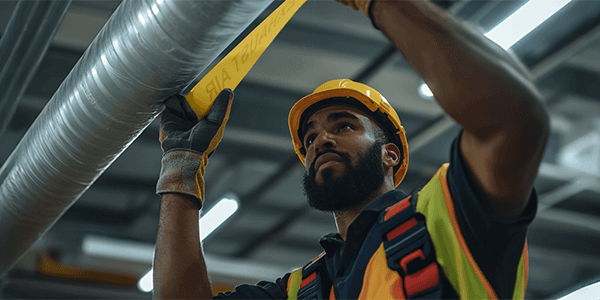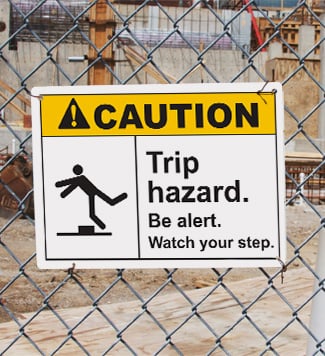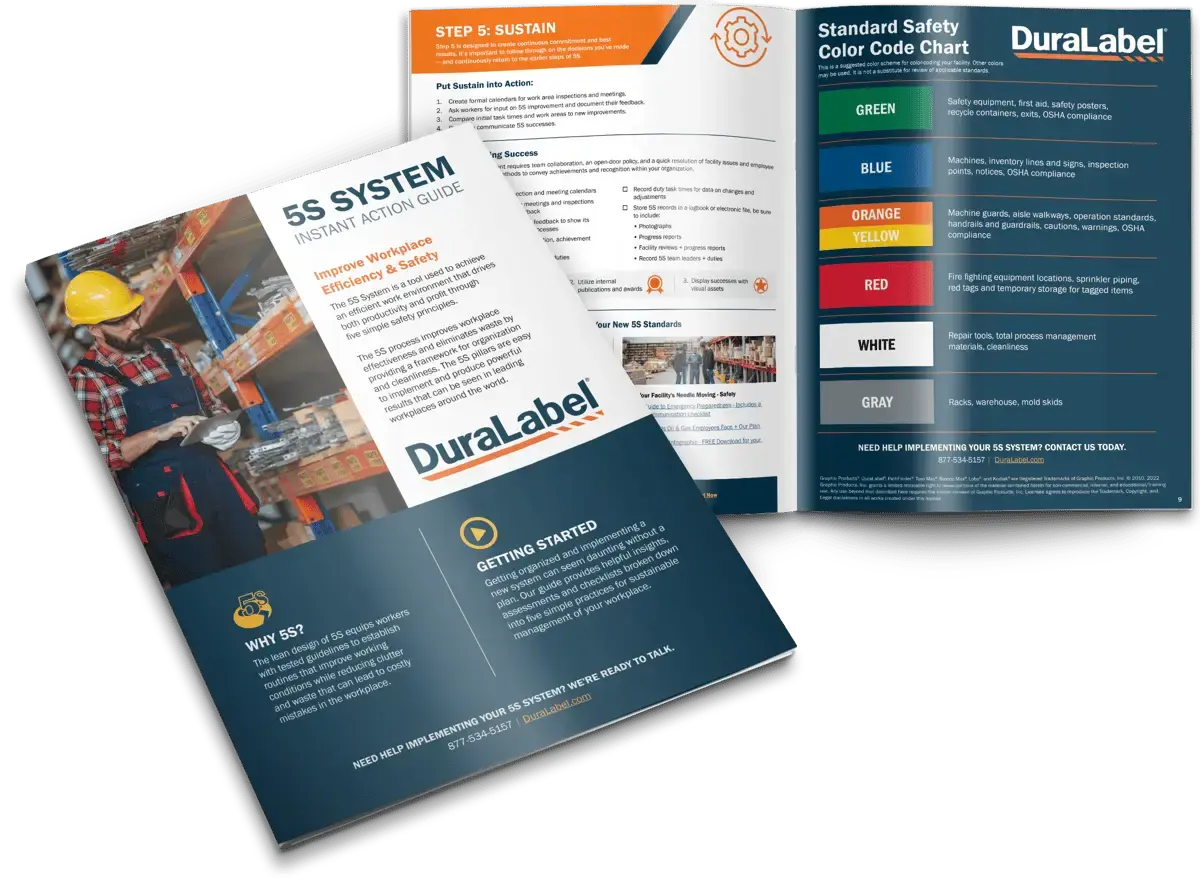The Key to Reliable Construction Projects: Safety Signage That Works

Construction signs and labels play a crucial role in protecting workers and keeping projects on schedule. With multiple contractors, evolving tasks, and constantly changing site conditions, clear visual communication helps crews stay informed and avoid costly mistakes. A well-planned labeling strategy can improve construction site safety, streamline workflows, and prevent compliance issues. However, without proper planning, labeling projects can become disorganized, leading to confusion and delays.
Starting a safety signage project may seem overwhelming, but with the right approach, it can be a seamless process. By integrating custom safety labels and signs into the early stages of project planning, construction teams can create a safer, more efficient work environment while staying on track with deadlines and budget goals.
Establish Boundaries with Safety Signage
Job site cleanliness and construction site safety are essential for keeping projects on schedule and within budget. Clear communication plays a vital role, making safety signage essential for maintaining a smooth and adaptable work environment.
The construction industry recorded 1,075 fatalities in 2023, according to the Bureau of Labor Statistics (BLS), emphasizing the urgent need for stronger safety signs and measures. In response, organizations like the American National Standards Institute and safety groups are working to enhance health and safety programs for collaborative construction projects. Recognizing the dynamic nature of risks on construction sites, safety professionals emphasize the importance of engaging the entire project hierarchy in a well-defined construction site safety process.
Planning and Implementing of Custom Safety Labels
Construction crews can address known hazards and improve safety once they implement a comprehensive plan. Some projects struggle to identify safety signage needs, but establishing warning labels from the start creates a strong foundation and clear safety boundaries. Considering custom safety labels early in the construction process keeps them accounted for in the budget, preventing delays and complications.
Focus on Communication for Construction Site Safety
Construction teams must clearly define life-saving actions to address top dangers such as fall protection, dropped objects, hot work, and hazardous energy control. Effective visual communication—through safety signs, labels, and markings—reinforces these critical precautions, ensuring workers quickly recognize hazards and follow proper procedures. Clear safety signage enhances situational awareness, reduces human error, and strengthens construction site safety culture by providing consistent, on-site guidance. Integrating visual communication with training and behavioral awareness further supports a safer, more compliant job site.
Hidden Hazards and Lean Construction
Proactively identifying hidden hazards strengthens construction site safety and minimizes risks. Implementing an on-site system clarifies safety signage needs, supports lean construction methods, and upholds 5S principles. Safety signs and warning labels communicate critical information, warning about power lines, tool and electrical equipment usage, emergency procedures, and more. Adding them to a daily checklist keeps workers on task and ensures proper labeling throughout the project. Regular site inspections, ongoing training, and awareness programs keep labels and signs prominently displayed on pipes, wires, and other high-risk areas across the site.
Put the Plan into Action
Here are some tips to remember as you start your labeling and signage project for your construction site:
- Clear and Consistent Communication:
- Use universally recognized symbols, colors, and language for consistency.
- Ensure that safety signs are easily understood by workers of various backgrounds and language proficiencies.
- Legible and Visible Fonts:
- Choose clear, legible fonts with a size that is easily readable from a distance.
- Ensure good contrast between text and background colors to enhance visibility.
- Safety First:
- Prioritize safety signs to warn about potential hazards, mandatory PPE (personal protective equipment), and emergency procedures.
- Clearly mark emergency exits, first aid stations, and fire extinguisher locations.
- Zone Identification:
- Label different zones or areas of the construction site for easy navigation.
- Use color-coded custom safety labels to distinguish between work zones, storage areas, and pedestrian walkways.
- Equipment Labeling:
- Clearly label all construction equipment with essential information, including operating instructions, warning labels, and emergency contact numbers.
- Use durable labels that can withstand outdoor conditions.
- Temporary Road Signs:
- If the construction site involves temporary roadways, use appropriate road safety signs to guide both construction traffic and regular road users.
- Display speed limits, warnings, and directional signs as needed.
- Project Information Boards:
- Install project information boards at entrances, providing details such as project name, timeline, construction site safety guidelines, and emergency contact information.
- Keep these boards updated with the latest project developments.
- Wayfinding Signs:
- Implement wayfinding safety signage to guide workers, visitors, and emergency personnel to key locations within the construction site.
- Use arrows and clear directional indicators.
- Material Storage Labels:
- Clearly label storage areas for construction materials, specifying the type of material, quantity, and any handling precautions.
- Update custom safety labels as materials are added or removed.
- Electrical Hazard Warnings:
- Clearly mark areas with electrical hazards and provide information about high voltage and other potential risks.
- Ensure that electrical panels and equipment are labeled with proper warnings and operating instructions.
- Construction Site Rules:
- Display construction site rules prominently at key entry points.
- Include information about restricted areas, safety protocols, and contact details for site management.
- Regular Maintenance:
- Regularly inspect and maintain signage to ensure visibility and legibility.
- Replace damaged or faded signs promptly.
- Training and Education:
- Provide training to workers on the meaning of different safety signs and labels.
- Emphasize the importance of adhering to safety instructions.
By implementing these tips for safety signage, warning labels, and custom safety labels, construction projects can create a safer, more organized, and efficient working environment. Regularly assess the needs of the site and adjust safety signs accordingly to maintain effectiveness throughout the project.
DuraLabel Solutions for Construction Projects
DuraLabel provides durable labels and safety signs designed to withstand the demanding conditions of construction sites. From hazard warnings and PPE reminders to wayfinding and equipment labels, our solutions help keep workers informed and job sites compliant. Made with tough-tested materials, DuraLabel labels resist harsh weather, abrasion, and chemicals, ensuring long-lasting visibility.
For on-site printing, the DuraLabel Toro Max Industrial Sign and Label Print System delivers instant, high-quality labels wherever you need them. With its wireless capability and built-in touchscreen, this all-in-one system makes it easy to create custom signs and labels on demand—without the downtime of outsourcing.
DuraLabel's free Construction Safety Guide is designed for safety managers, general contractors, and subcontractors to help boost compliance with OSHA safety regulations and improve productivity and on-time completion. Download a free copy of the Construction Safety Best Practice Guide. Give us a call today at 1-888-789-8120 and one of our experts will guide you through the process.
Read Next:
5S Examples in Action: the Good and the Bad
Related Resources

How 5 Industries Rely on Custom OSHA Signs to Cut Hazards
How Can Construction Safety Signs Reduce Injury Risks in Fast-Paced Job Sites? Construction safety signs ...
Read
Why Custom Industrial Labels Matter for Mechanical Job Sites
How Do Custom Industrial Labels Improve Safety and Organization on Job Sites? Mechanical job sites are ...
Read
How Custom Vinyl Labels Help Facilities Boost Safety and Compliance
Why Are Premium Custom Vinyl Labels Important forWorkplace Safety? Premium custom vinyl labels are gaining ...
Read.png)






